
Japanese architect Shigeru Ban has been announced as the 2014 Laureate of the Pritzker Architecture Prize. Established by the Pritzker family of Chicago in 1979, the prestigious award is widely regarded as "the Nobel Prize" in the architecture profession.
Shigeru Ban will be the seventh Japanese architect to become a Pritzker Laureate — following the late Kenzo Tange in 1987, Fumihiko Maki in 1993, Tadao Ando in 1995, the team of Kazuyo Sejima and Ryue Nishizawa in 2010, and Toyo Ito in 2013.
Shigeru Ban will officially accept the prize at a formal ceremony in the Rijksmuseum in Amsterdam on June 13, 2014. This will be the first time the ceremony will be held in The Netherlands.
Past recipients in recent years include Toyo Ito (2013), Wang Shu (2012), Eduardo Souto de Moura (2011), SANAA (2010), and Peter Zumthor (2009). Laureates receive a $100,000 grant, a formal citation certificate, and a bronze medallion based on the designs of famed Chicago architect Louis Sullivan.
From the winning announcement:
"Shigeru Ban, a Tokyo-born, 56-year-old architect with offices in Tokyo, Paris and New York, is rare in the field of architecture. He designs elegant, innovative work for private clients, and uses the same inventive and resourceful design approach for his extensive humanitarian efforts. For twenty years Ban has traveled to sites of natural and man-made disasters around the world, to work with local citizens, volunteers and students, to design and construct simple, dignified, low-cost, recyclable shelters and community buildings for the disaster victims.
Reached at his Paris office, Shigeru Ban said, 'Receiving this prize is a great honor, and with it, I must be careful. I must continue to listen to the people I work for, in my private residential commissions and in my disaster relief work. I see this prize as encouragement for me to keep doing what I am doing — not to change what I am doing, but to grow.' 
In all parts of his practice, Ban finds a wide variety of design solutions, often based around structure, materials, view, natural ventilation and light, and a drive to make comfortable places for the people who use them. From private residences and corporate headquarters, to museums, concert halls and other civic buildings, Ban is known for the originality, economy, and ingeniousness of his works, which do not rely on today’s common high-tech solutions.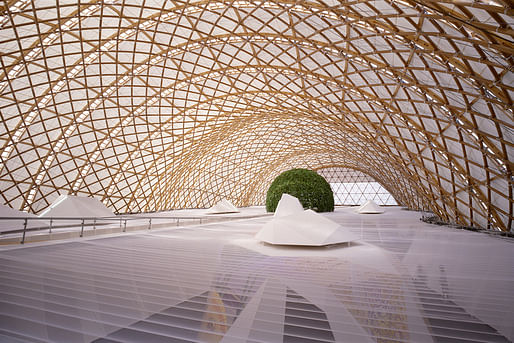
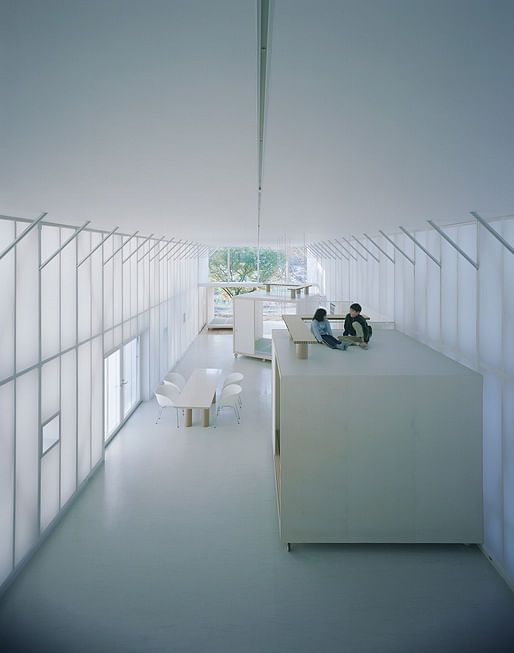
To construct his disaster relief shelters, Ban often employs recyclable cardboard paper tubes for columns, walls and beams, as they are locally available; inexpensive; easy to transport, mount and dismantle; and they can be water- and fire-proofed, and recycled. He says that his Japanese upbringing helps account for his wish to waste no materials.
As a boy, Shigeru Ban observed traditional Japanese carpenters working at his parents’ house and to him their tools, the construction, and the smells of wood were magic. He would save cast aside pieces of wood and build small models with them. He wanted to become a carpenter. But at age eleven, his teacher asked the class to design a simple house and Ban’s was displayed in the school as the best. Since then, to be an architect was his dream.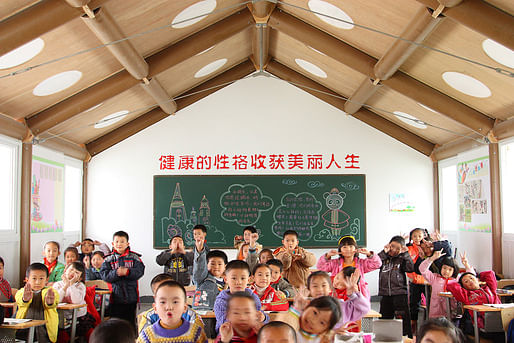
Ban’s humanitarian work began in response to the 1994 conflict in Rwanda, which threw millions of people into tragic living conditions. Ban proposed paper-tube shelters to the United Nations High Commissioner for Refugees and they hired him as a consultant. After the 1995 earthquake in Kobe, Japan, he again donated his time and talent. There, Ban developed the “Paper Log House,” for Vietnamese refugees in the area, with donated beer crates filled with sandbags for the foundation, he lined up the paper cardboard tubes vertically, to create the walls of the houses. Ban also designed “Paper Church,” as a community center of paper tubes for the victims of Kobe. It was later disassembled and sent to Taiwan, and reconstructed there, in 2008. 
Ban works with local victims, students, and other volunteers to get these disaster relief projects built. In 1995, he founded a non-governmental organization (NGO) called VAN: Voluntary Architects’ Network. With VAN, following earthquakes, tsunami, hurricanes, and war, he has conducted this work in Japan, Turkey, India, Sri Lanka, China, Haiti, Italy, New Zealand, and currently, the Philippines.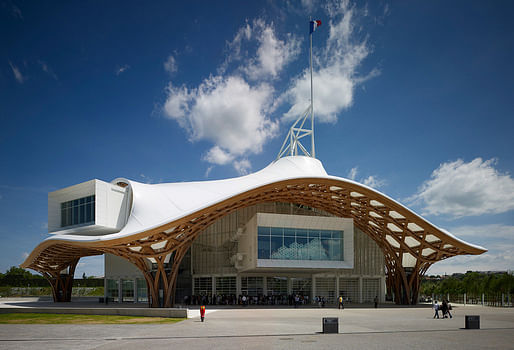
Pritzker Prize jury chairman, The Lord Palumbo, said, 'Shigeru Ban is a force of nature, which is entirely appropriate in the light of his voluntary work for the homeless and dispossessed in areas that have been devastated by natural disasters. But he also ticks the several boxes for qualification to the Architectural Pantheon — a profound knowledge of his subject with a particular emphasis on cutting-edge materials and technology; total curiosity and commitment; endless innovation; an infallible eye; an acute sensibility — to name but a few.'
The citation from the Pritzker Prize jury underscores Ban’s experimental approach to common materials such as paper tubes and shipping containers, his structural innovations, and creative use of unconventional materials such as bamboo, fabric, paper, and composites of recycled paper fiber and plastics.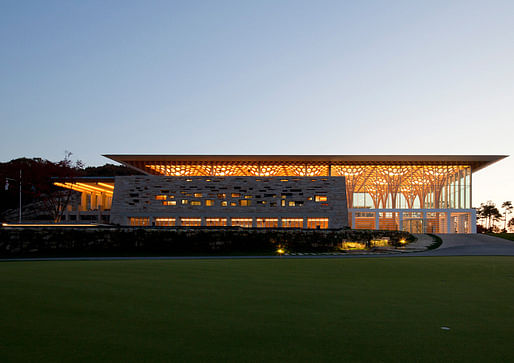
The distinguished jury that selected the 2014 Pritzker Laureate consists of its chairman, The Lord Palumbo, internationally known architectural patron of London, Chairman Emeritus of the Trustees, Serpentine Galleries, former Chairman of the Arts Council of Great Britain, former Chairman of the Tate Gallery Foundation; and alphabetically: Alejandro Aravena, architect and Executive Director of Elemental in Santiago, Chile; Stephen Breyer, U.S. Supreme Court Justice, Washington, D.C.; Yung Ho Chang, architect and educator, Beijing, The People’s Republic of China; Kristin Feireiss, architecture curator, writer, and editor, Berlin, Germany; Glenn Murcutt, architect and 2002 Pritzker Laureate, Sydney, Australia; Juhani Pallasmaa, architect, professor and author, Helsinki, Finland; and Ratan N. Tata, Chairman Emeritus of Tata Sons, the holding company of the Tata Group, Mumbai, India. Martha Thorne, Associate Dean for External relations, IE School of Architecture & Design, Madrid, Spain, is the Executive Director of the prize."
Click the thumbnails below for more of Shigeru Ban's projects.
16 Comments
Huh. Honestly, I can't decide if my reaction is more "yawn" or "WTF were they thinking?" Either way, I don't find it an inspiring choice.
He has some nice projects. But to put him on the pedestal as Rem, Herzog de Meuron, SANAA, Toyo Ito, etc. above other choices like Steven Holl, David Chipperfield, Craig Dykers, Tod and Billie, etc. simply seems puzzling to me. Especially given that they named a (much-deserved) Japanese laureate last year.
What do others think? Am I alone in my lack of enthusiasm?
Should have been Holl.
^ nationality should not be a factor in the decision making.
Tim - I totally agree - my point was that they jury typically (attempts to) make an effort to diversify its winners' nationalities. I know there was some criticism in the Prize's formative years that it went mostly to Americans.
Nationality aside, I still can't feel any sense of excitement over the pick. But the jury is subjective, just as I am, so maybe it's just me.
Oh, and ahrne - clearly someone on the jury has a vendetta about Holl. It's been "his year" for half a decade now!
It took them 45 years to give it to Utzon.
Do you think that the Album of the Year at the Grammy Awards is actually the best recorded music created by anyone that year?
Sphinx I totally agree. Ban is certainly a good choice; his work is innovative, gorgeous, and well-known. But Hol's work is also those three things, as well as being (IIRC) larger in scope, scale, and location.
It does seem Holl is blacklisted. Not that Ban doesn't deserve it, he does! But how much longer will we have to wait for Holl?
First SCI Arc graduate to get a Pritzker. He was two-three years my junior and very quite person. Congratulations Sugar Ban, you are just like your nick name.
Schumacher's response. This is turning into a Real Housewives episode.
is he wearing one of those old calculator watches in that cover picture?
his watch is boss
Donna - Jesus, I can't decide which is more ridiculous: Schumacher's brazen and immature un-compliment, or the fact that he actually likes the Metz Pompidou project (which, I'm sorry, is fucking hideous). It looks like David Chipperfield impregnated Frei Otto but then aborted it halfway through gestation.
Un-compliments, as defined by Clay Shirky in this excellent piece:
Criticize, sure -- if something's bullshit, say so, and if you have an insight about how something might be better, sing it, and sing it loud. It is New York, after all. But when you feel yourself about to criticize something because you just can't stand how good it is (and you know you do this, we all do), at that moment, stop. Stop, because it will turn you into the kind of small-minded champion of mediocrity we all came here to escape.
Unexpected but well-deserved.
Savvy choice by the Pritzker; award an architect who does projects for all social types (disaster and ny condos alike) in beautifully constructed and detailed ways. A nice counterargument to the DSB controversy that was completely focused on politics and not at all about architecture. Though it seems the coverage is a bit too focused only on the temporary, social housing and not great design applied to many different types which is a stronger argument i think. Seems like the articles are branding him as 'temporary architecture' personified.
Still, it feels about five years late. Seems to be a growing backlog of deserving architects.
"Ban's work is internationally renowned, admired for its consistently experimental approach and its profound integration of traditional Japanese building techniques with a modernist commitment to functional elegance" - Philip Kennicott
Sounds like he meets all the qualifications to win. What's the problem?
Block this user
Are you sure you want to block this user and hide all related comments throughout the site?
Archinect
This is your first comment on Archinect. Your comment will be visible once approved.